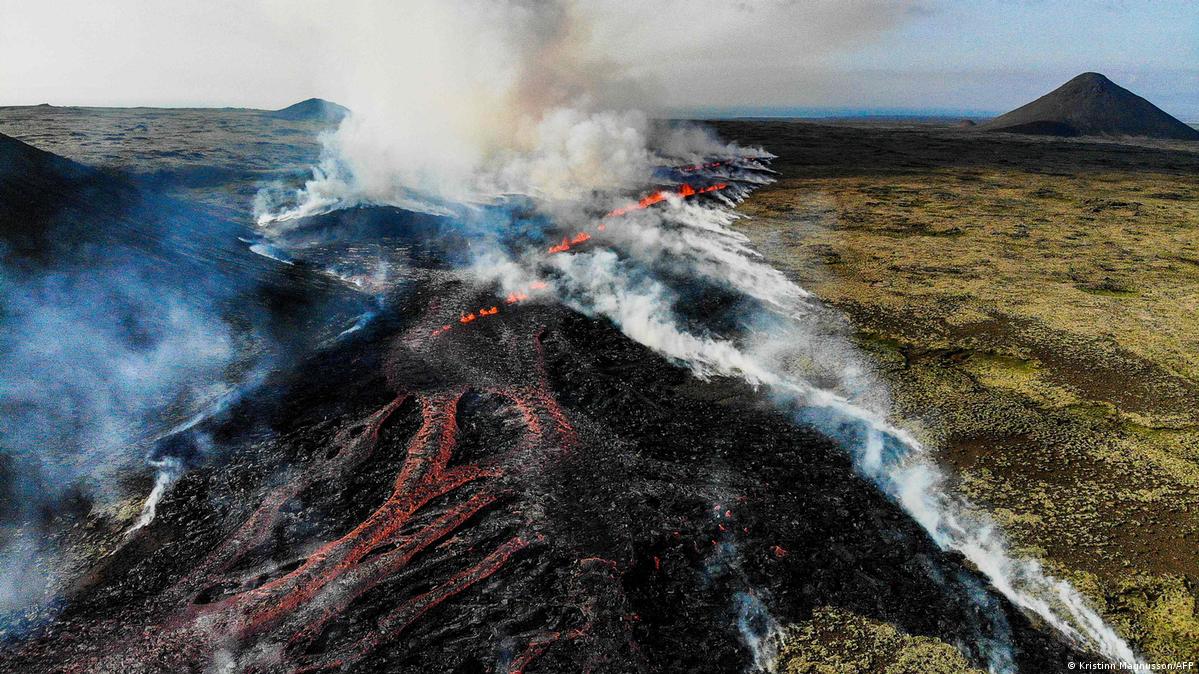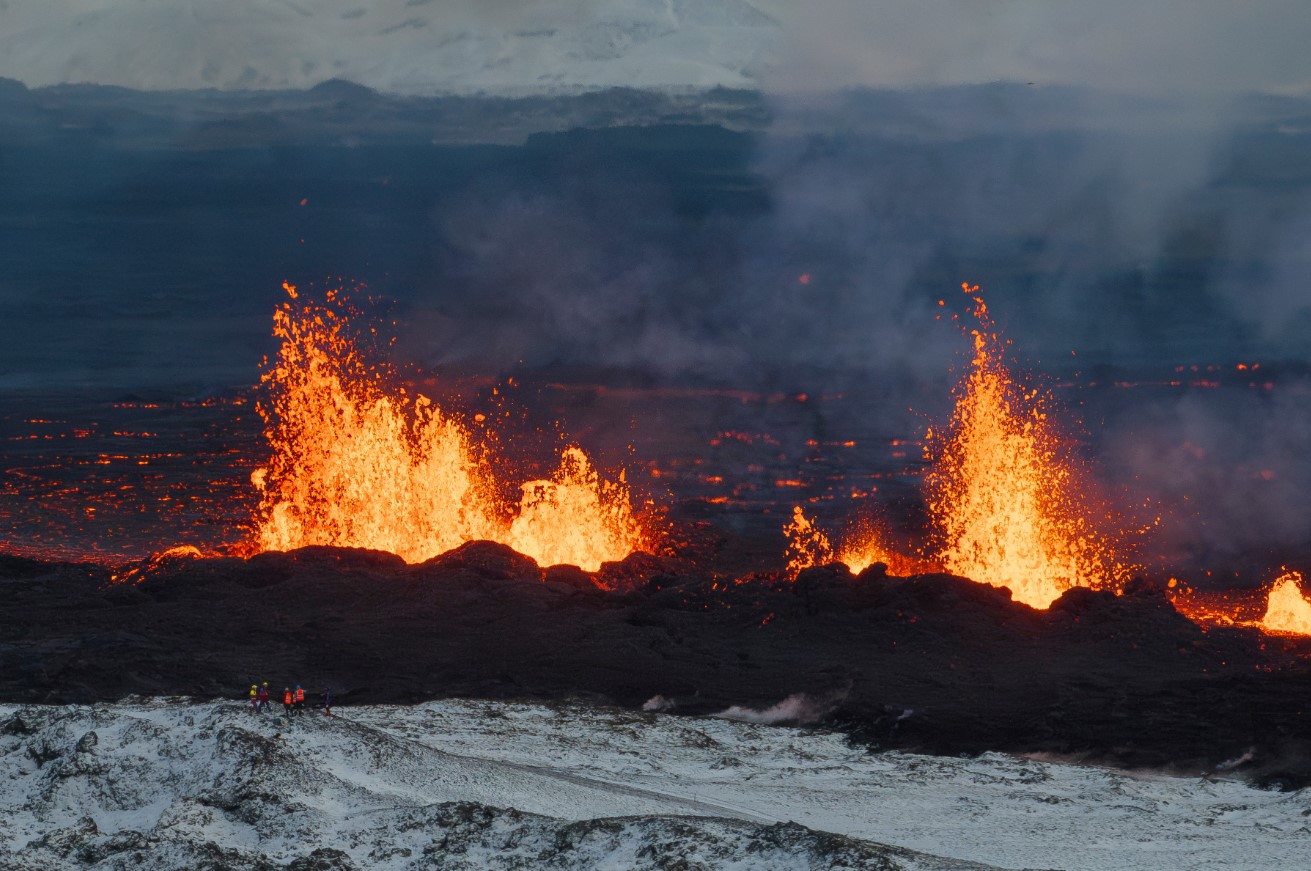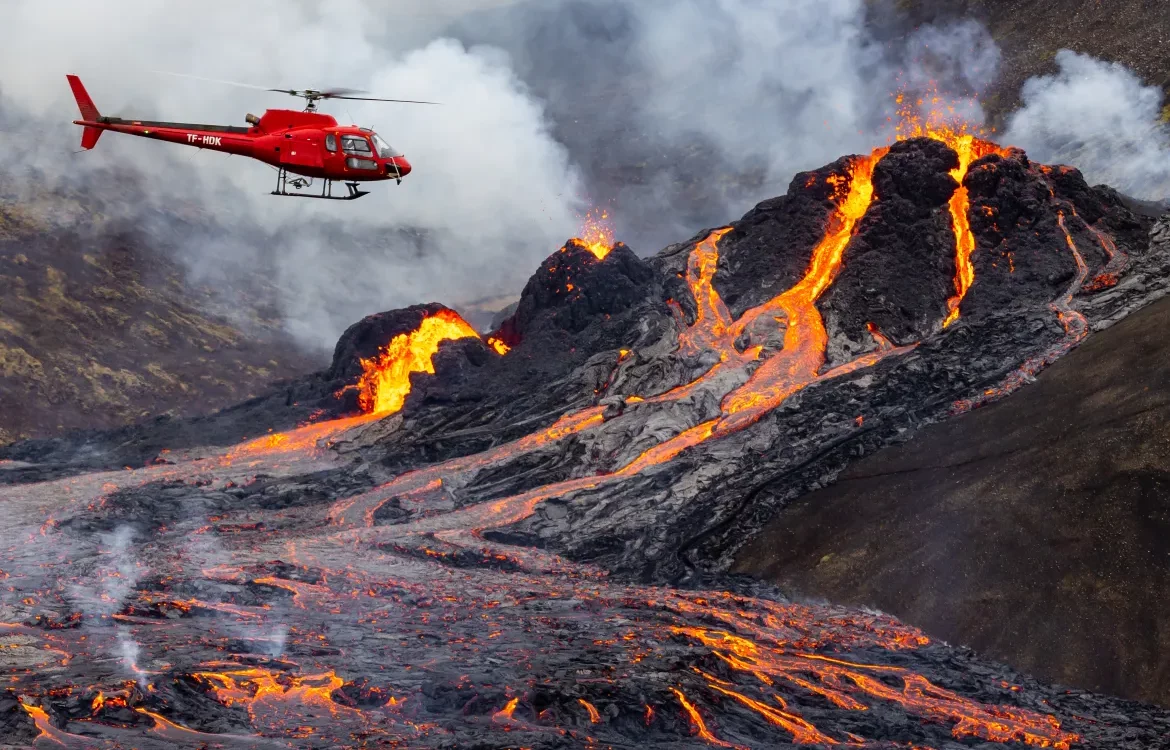A volcano in southwest Iceland is preparing for a new show of force
The northern island nation, near the town of Grindavik, experienced its third volcanic eruption in the past month. According to preliminary estimates, the length of the crack was about three kilometers.
The event took place on February 8 in southwest Iceland’s Reykjanes Peninsula, as confirmed by Icelandic authorities. According to the Icelandic Meteorological Office (IMO), a significant yet minor earthquake commenced northeast of Silingarfell, a peak in southwest Iceland, at 5:30 am. Roughly 30 minutes later, an eruption ensued in the identical vicinity. Images and footage released by local media depicted lava streaming from the fissure, illuminating the trajectory of smoke ascending into the nocturnal atmosphere.
The IMO also noted that the fissure formed in close proximity to previous eruptions in the same area. According to preliminary estimates, the length of the crack was about three kilometers, which indicates significant destruction of the earth’s surface and the activity of the volcanic process. This third eruption in as many weeks is a reminder of the risks associated with geological events in the region.(the first is December 18, 2023, and the second is January 14, 2024).

Recent events have caused alarm among the local population and led to the evacuation of the town of Grindavik due to the danger of an eruption. Geologists and volcanologists continue to monitor the situation, assessing the risks and preparedness for the possible consequences of a new eruption. These events also highlight the importance of further research into seismic and volcanic activity to ensure the safety and protection of life and property in the region. Volcanic eruptions are an integral part of the geological process and are a reminder of the importance of emergency preparedness and risk management.
Iceland: Third eruption in weeks highlights its geological activity
With the region’s third volcanic eruption in as many weeks, it’s worth paying attention to the geological activity of Iceland, which is known for its volcanic processes. There are more than 30 active volcanoes in the country. Tracking and monitoring volcanic activity plays a key role in preventing disasters and minimizing risks to communities and property.
The evacuation of the town of Grindavik became a necessary precautionary measure in light of the threat of an eruption, highlighting the readiness and ability of local authorities to quickly respond to emergencies. This also caused concern among the population and attracted the attention of the world community to the situation in the region.

Six eruptions in two years
Over the past two years, there has been a sixth occurrence of volcanic activity in Iceland. The town of Grindavik lies situated on the Reykjanes Peninsula, in the southwest of the country and has a population of about 4,000 people, mainly engaged in fishing. Until March 2021, for eight centuries, the peninsula remained untouched by volcanic eruptions. Iceland boasts over 30 active volcanic complexes, marking the region as the most volcanically active in Europe. Positioned along the Mid-Atlantic Ridge, an underwater mountain range dividing the Eurasian and North American tectonic plates, Iceland showcases its geological dynamism. Following eruptions in August 2022 and in July and December 2023, experts in volcanology ponder whether this heralds the onset of a fresh phase of seismic events in the area.


